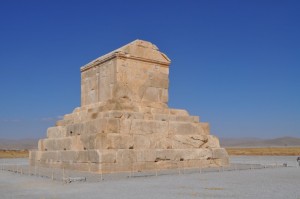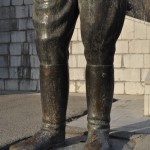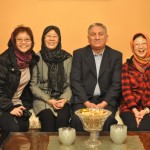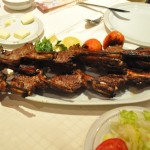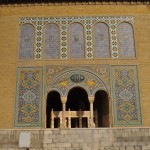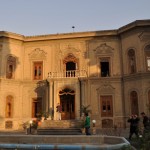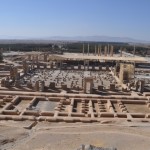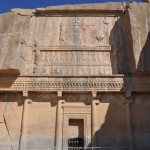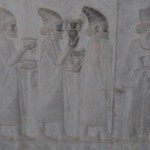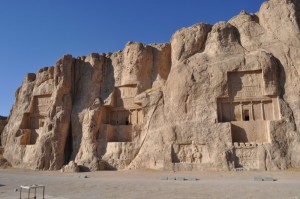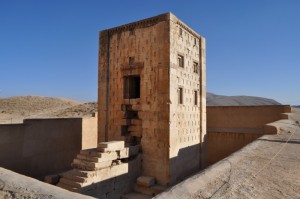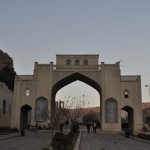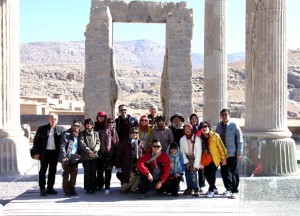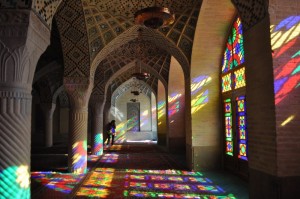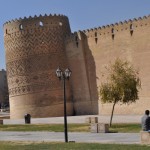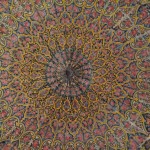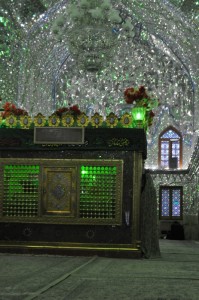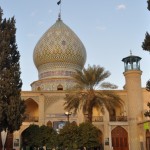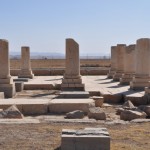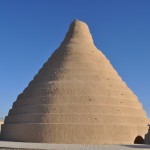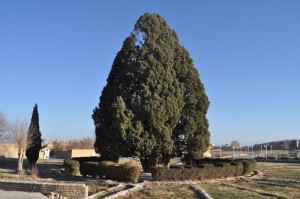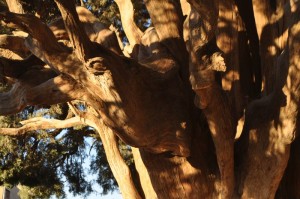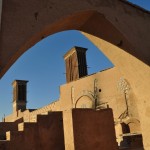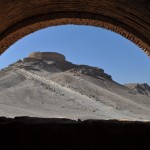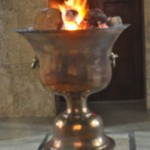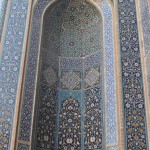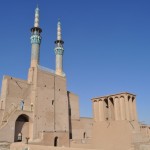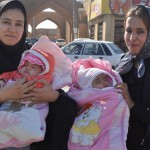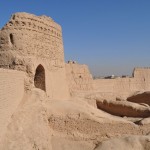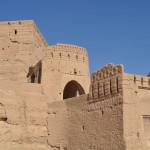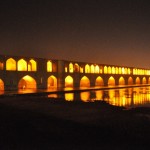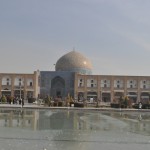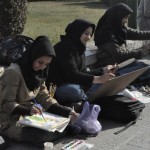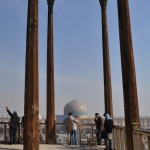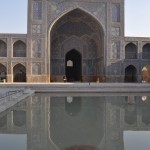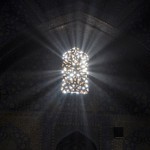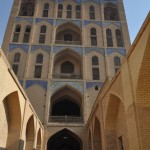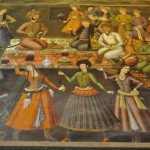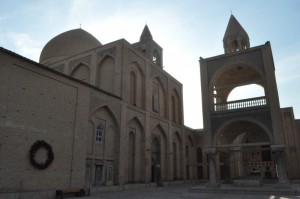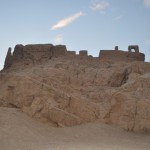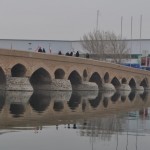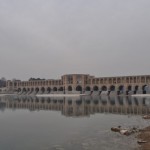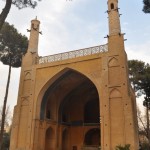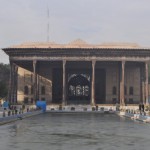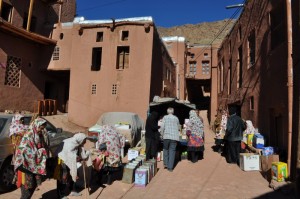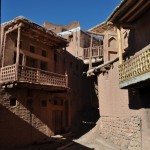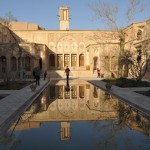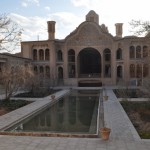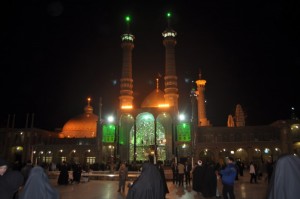Persia has captured travellers’ imagination for centuries. Iran has been on my ‘must – see’ list for decades. I joined a classic 10-day tour to Central Iran and visited Tehran, Shiraz, Yard, Esfahan, Kashan and Qom (ie the ‘In the footsteps of Empire’ route as described in the Lonely Planet) from December 23, 2010 to January 1, 2011. In addition, I spent another ten days before and after the tour to explore Western Iran.
Central Iran: In the Footsteps of the Empire (December 23 – January 1)
Day 1 (December 23) : Tehran
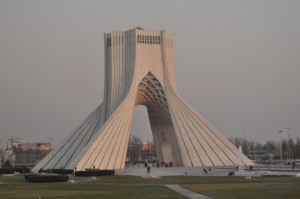 Tehran, capital of both Iran and the province of Tehran, is a huge, congested and polluted agglomeration. It first became a capital in 1789 under Qajar rule. At the beginning of the Pahlavi reign in 1925, the town had about 210,000 inhabitants for two centuries and intense urban development began during the 1950s and ’60s. The population reached 2.7 million in 1966. It now has an estimated population of 10 million and faces a number of serious problems, including overcrowding, severe air pollution and traffic jams.
Tehran, capital of both Iran and the province of Tehran, is a huge, congested and polluted agglomeration. It first became a capital in 1789 under Qajar rule. At the beginning of the Pahlavi reign in 1925, the town had about 210,000 inhabitants for two centuries and intense urban development began during the 1950s and ’60s. The population reached 2.7 million in 1966. It now has an estimated population of 10 million and faces a number of serious problems, including overcrowding, severe air pollution and traffic jams.
We had a most delicious dinner in a local restaurant famous for its lamb dishes. I joined a friend to visit Ada, a Hong Kong Chinese who has settled in Tehran with her Iranian husband, Mehdi for over 30 years. It is wonderful to be welcomed into a Persian home.
Day 2 (December 24, Christmas Eve) : Tehran – Shiraz (by air)
We visited four museums before flying to Shiraz in the late afternoon.
Persian carpets are world famous and I love carpets. We had high expectations to see the collection in the Carpet Museum. Unfortunately, electricity was suddenly cut off and the museum had to close for security reasons.
The National Museum of Iran has some well-preserved exhibits including those from Shush, Persepolis, the Salt Man from Zanjan, a bronze statue of a prince and the Lorestan bronzes dating back to the 8th century are remarkable. However, given Persia’s glorious past, rich culture and long history, I am surprised by the relatively small collection on display and the lack of comprehensible illustration in English. We were however lucky to see was the special exhibition of the world famous ‘Cyrus Cylinder’ which was on loan from the British Museum (how ironical!). The document has been regarded by many as the world’s first chapter of human rights.
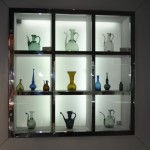 The Golestan Palace located in the heart of the city is made up of a few grand buildings set around a carefully manicured garden in Persian style. Most of the buildings were closed for restoration. We briefly visited the Ivan-e akht-e Marmar, a mirrored, open-fronted audience hall dominated by a magnificent throne and the imposing Shams-Al Emarat(Edifice of the Sun) which was built between 1865 and 1867 and was the tallest palace of its day. The Ethnographical Museum is worth a quick look.
The Golestan Palace located in the heart of the city is made up of a few grand buildings set around a carefully manicured garden in Persian style. Most of the buildings were closed for restoration. We briefly visited the Ivan-e akht-e Marmar, a mirrored, open-fronted audience hall dominated by a magnificent throne and the imposing Shams-Al Emarat(Edifice of the Sun) which was built between 1865 and 1867 and was the tallest palace of its day. The Ethnographical Museum is worth a quick look.
The Glass & Ceramics Museum is arguably the best designed in Iran. Housed in a beautiful Qajar-era building of a rich Persian family, it has an excellent collection some dating from 2nd millennium. The exhibits are well organised with explanations in English.
To celebrate Christmas Eve, we had a party in our hotel in Shiraz (1600m) after dinner. After watching a 45-minute 3-D film on Persepolis (a World Heritage Site), we had a lucky draw. I got a nice pouch bag which is useful for my travel.
Day 3 (December 25- Christmas) : Shiraz -Persepolis – Shiraz (100km)
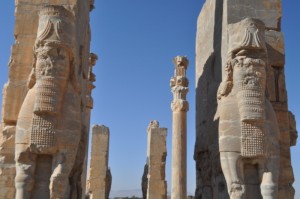 Persepolis (1630m) is the symbol of the greatest successes of the Achaemenid dynasty. Its site was some 125,000 square metres in area in its heyday. It was one of the four capitals of the first Persian Empire stretching from the Indus River to Ethiopia. The other three capitals were Shush, Ecbatana (modern Hamandan) and Babylon. Constructions works began with Darius I (the Great ) who came the throne in 518 BC and continued for a period of more than 150 years.
Persepolis (1630m) is the symbol of the greatest successes of the Achaemenid dynasty. Its site was some 125,000 square metres in area in its heyday. It was one of the four capitals of the first Persian Empire stretching from the Indus River to Ethiopia. The other three capitals were Shush, Ecbatana (modern Hamandan) and Babylon. Constructions works began with Darius I (the Great ) who came the throne in 518 BC and continued for a period of more than 150 years.
We entered through the Grand Stairway and followed the main walking route ie the Gate of All Nations, Hall of 32 Columns, Treasury, the Palace of 100 Columns (the second largest building), Haremsara (probably a harem for the king’s consorts and concubines and a museum now), Tripylon (Xerxes” Hall of Audience), Apadana Staircase. We made a side trek to see the rock-hewn tomb of Artaxerxes III on the hill side before visiting the Apadana Palace, Tachara (winter palace) and Hadish. The iconic bas-reliefs of the Apadana Staircase is indeed the finest carving of its time. The panels at the northern end with Persians and Medes, Achaemendid soldiers, the Imperial Guard and Immortals and the southern end showing the 23 delegations bringing their tributes to the Achaemenid king are beautiful carvings and have served as living memory of the grandure and achievements of Achaemenid dynasty. It is a truely one of the world’s premier ‘must-see’ sights.
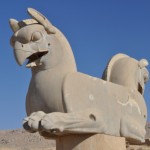 |
On the way back to the hotel, we stopped at the Allah Akbar Gorge, climbed Mt Baba Kuhi and visited Darvazeh-ye Quran. According to Pasha (our guide), the gateway holds a Quran and travellers have traditionally passed underneath it before taking a journey. This would ensure their safe return. There was no Christmas atmosphere in Shiraz though we celebrated just the same with non-alcoholic beer (instead of Shiraz, the lovely red wine which was first produced in Shiraz).
Day 4 : Shiraz
Shiraz has been the heartland of Perisan culture for over 2000 years. It became the provincial capital about AD 693. Known as the Houses of Learning, the City of Roses, City of Love, and City of Gardens, Shiraz has become synonymous with education, nightingales and wine. It is also the birthplace of two famous poets, Sa’di and Hafez.
The most imposing sight of the city is the Arg-e Karim Khan built in the early Zand period, with four 14 metre high circular towers including the leaning southeastern tower. Our first stop was the Martyr’s Mosque which is one of the holiest Shiite sites in Iran, with a courtyard covering some 11,000 square metres. All women have to wear a chador. The most prominent building is the glittering Aramgah-e Shan-e -Cheragh, the mausoleum of Sayyed Mir Ahmad, one of Iman Reza’s 17 brothers, who was killed by the caliphate in AD 835. As non-Muslims, we could not enter the shine.
The second stop was the Nasir-ol-Molk Mosque which is considered one of the most photographed mosques in southern Iran. The mosque built at the end of 19th century has stunning pink and red stained glass, tiles and carved pillars. We also descended to the Gav Cha (Cow Well) where cows used to walk to the end of passage in order to raise water from the well. Before lunch, we visited Aramgah-e Sa’di (Tomb of Sa’di who lived from 1207 to 1291). The underground teahouse next to the tomb is worth visiting. There is a pond in the middle of the teahouse fed by a qanat (underground water channel) with crystal clear water.
In the afternoon, we visited Khan-e Zinat ol-Molk (Fars History Museum) and Aramgah-e Hafaz who probably lived from AD 1324 to 1389. I put on my chador again before going into Imamzadeh-ye Ali Ebn-e Hamze, the shine of Emir Ali, a nephew of Shah Cheragh who died in Shiraz while en route to Khorasan to help Imam Reza. We sat quietly inside the shine, which is covered with dazzling mirror work. Our final stop was the Bazar-e Vakil where we enjoyed a cup of tea with Iranian sweets in a traditional tea-house.
Day 5 : Shiraz – Pasargadae – Yard (440km)
Pasargadae (1847m), a World Heritage Site, was built by Cyrus the Great, the first Achaemenid king in about 546 BC. His tomb standing alone on the windswept Morghab Plain is simple but most imposing. I found the palaces extremely modest for the first king of the world’s first empire. This site is austere and atmospheric, lost in the times of sand.
We had a long drive but the desert-like landscape is beautiful. Before arriving in Yard, we stopped in Abaqu (1510m) to see an ice house built in the11th century and a gigantic 4500-year-old cypress tree said to be the longest living creature on earth. I took many pictures and one of which showed a smiling friendly face from this unique tree. It is a miracle!
Day 6 : Yard
Yard (1213m) is said to the ‘oldest living city on Earth’ as it is widely believed to have been inhibited for about 7,000 years. When Marco Polo passed through the city in the 13th century, he described Yard as ‘ a very fine and splendid city and a centre of commence’. The old city made from sun-dried mud bricks with a forest of badgirs (wind towers), is a World Heritage Site for its architectural heritge. Wedged between the northern Dasht-e Kavir and southern Dasht-e Lut, Yard is an amazing and enchanting city in the desert. It is also home to Iran’s largest population of Zoroastrians.
We visited two important Zoroastrian sites. Ateshkadeh (Sacred Eternal Flame), also known as the Zoroastrian Fire Temple, holds the flame which is said to be burning since about AD 470. The flame was transferred to Yard in the late 15th century. The Towers of Silence set on two barren hilltops on the southern outskirts of Yard are most atmospheric. In accordance with their beliefs about purity of the earth, dead bodies were not buried but left in uncovered stone towers to be eaten by vultures. But owing to concern about public health, these two towers have not been used since the 1960s. I climbed to the higher tower which is difficult to get to the top and was rewarded with a commanding view of the area.
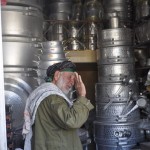 |
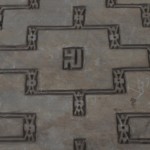 |
The old city is a World Heritage Site should be explored on foot. We first went to the Amir Chakmaq complex which has a three-storey facade of the takieh (a building used during the rituals to commemorate the death of Imam Hossein). From the top, one can have excellent views of the city with numerous photogenic badgirs and had lunch in a nice restaurant which was once a hammam (bathhouse) with exquisite decorations. We had lunch in Hammam-e Khan Restaurant which was once a bath house with exquisite decorations ie tranquil pools, arched ceilings and fine tilework.
We stopped briefly at the Alexander’s prison which was said to be built by Alexander the Great and used as a dungeon. I went also to the Tomb of the 12 Imams which is an early-11th century brick building next to Alexander’s prison (but none of the Imams were buried there)
I wished I could have had more time to wander around and get lost in its winding lanes!
Day 7 : Yard – Meybod – Esfahan (278km)
While packing, I could not find my purse and passport. Fortunately, my purse was picked up by staff in the restaurant the night before. I must have dropped them when taking out my computer from my backpack. It was the first time something like this had ever happened. The Iranians are honest. Otherwise, I would have got myself into serious troubles upsetting my subsequent travel plan to East Africa.
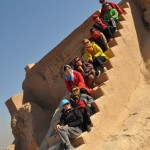 |
We finally arrived in Esfahan (1574m), the jewel of ancient Persia and one of the finest cities in the Islamic world. Safavid king, Shah Abbas the Great made Esfahan the capital in 1598 and rebuilt it according to a master plan with large avenues, magnificent gardens and a royal enclosure with palaces and gardens. It was opened up to the world and became one of the most glorious cities of its time. The saying ‘Esfahan is half of the world’ described the city at the height of its glory during the Safavid dynasty.
Day 8 & 9 : Esfahan
Esfahan is the highlight of the classic route and there is so much to see. We had a great time and visited the main sights.
Imam Square (a World Heritage Site), 512m long and 163m wide, the world’s second largest square with a most majestic collection of buildings. Construction of the square began in AD 1602 by Shah Abbas the Great as the centre piece of his new capital. It is the place for savouring the high refinements of Persian culture especially in and around Imam Square with the magnificient mosques and palaces.
Imam Mosque, described as one of the world’s most beautiful mosques, had taken 25 years to complete. It is covered in beautiful blue and white mosaics and tiles with every shade of turquoise. Its 30-metre tall entrance portal with two turquoise minarets, an inner courtyard with a ritual ablutions pool and a main sanctuary with a 36.3-metre high ceiling (the exterior reaches up to 51 metres due to double-layering during construction) are enormous and most imposing.
Sheikh Lotfollah Mosque, dedicated to Shah Abbas I’s father-in-law, was built between AD 1602 and 1619. Unlike other mosques, it has no minaret nor courtyard as it was not intended for public use. It was probably served as the place of worship for the women of the shah’s harem. It has been considered as the most fabulous mosque in Iran with a pale dome making extensive use of delicate cream-coloured tiles resulting in changes of colours throughout the day. Inside the sanctuary, beautiful mosaics cover all the interior. The shafts of sunlight filtering through the high, latticed windows thus producing a constantly changing interplay of light and shadow is breathtaking.
Ali Qapu Palace (opposite the Sheikh Lotfollah Mosque on Imam Square) was built by Shah Abbas I as his residence. This magnificent six-storey palace also served as the monumental gateway to the palaces in the parklands beyond. The elevated terrace with 18 columns (which is under restoration) affords the best views of the square and Imam Mosque.
Jolfa (the Armenian Quarter). In order to have artists and businessmen with skills and experience to develop the new capital, Shah Abbas I ordered the deportation of Armenian families from the town of Jolfa (now on Iran’s northern border) to Esfahan in AD 1604 and named the new village ‘New Jolfa’. Today, Esfahan is home to about 7,000 Christians with 13 Armenian churches.
Vank Cathedral built between AD 1606 and 1655, is the historical focal point of the Armenian church in Iran. The interior of the church is magnificent with a unique style ie Islamic tiles and designs on Christian imagery. The museum with a lot of displays and documents including some pictures on the Armenian genocide in Turkey, is worth visiting. Hasht Behsht Palace (meaning eight heavens) built in the 1660s, was once the most luxuriously decorated in Esfahan with soaring columns, impressive mosaics and stalactite mouldings and ceiling. It has lost its former glory and is under restoration.
There are 11 bridges cross the Zayandeh. Khaju Bridge, 110-metres long with two levels of terraced arcades, is arguably the finest of the Esfahan’s bridges. Built by Shah Abbas II in about AD 1650, it also doubles as a dam. In the centre is a pavilion exclusively for the ruler to sit on and admire the view. Si-o-Seh Bridge, 298-metres long with 33 arches built between AD 1599 and 1602 links the upper and lower halves of Chahar Bagh St. It also serves as a dam and looks stunning with lights on in the evening. Shahrestan Bridge is the oldest bridge in Esfahan. Most of its 11-arched stone and brick structures are believed to date from 12th century.
Manar Jomban (shaking minarets), which is the 14th century tomb of Abu Abdullah. Pasha (our guide) went to the top of the left minaret and pushed it hard. It’s amazing to see the minaret on the right sway back and forth.
Ateshkadeh-ye Esfahan
(Esfahan Fire Temple), dating from the Sassanian times and built in mud bricks on a hill, affords a panoramic view of the city. I watched a lovely sunset from this lonely ruin.
Pigeon Tower, a circular building which used to house as many as 14,000 pigeons for the purpose of collecting guano, a fertilizer for the city’s watermelon fields. There were once some 3,000 such towers in the area but are made redundant by chemical fertilizers.
Bazar-e Bozorg located at the opposite end of the Imam Mosque. The oldest parts are said to be over 1,000 years old. I spent an hour wandering in the maze of winding lanes and had tea in the atmospheric Azadegan Teahouse which has a large collection of teahouse utensils hanging from the walls and ceiling. My friends brought six carpets, gaz (nougat), dried fruits and herbs as souvenirs.
Day 10 (January 1, 2011) – Esfahan – Abyaneh – Kashan – Qom – Tehran (around 500km)
This was the most hectic day of the whole trip. We visited three cities on our way back to Tehran.
Abyaneh (2235m) is an isolated 1500-year-old village situated at the foot of Mt Kar-kas (3899m). It is most photogenic with twisting lanes of mud and stones winding through a maze of red mud-brick houses with lattice windows and wooden balconies. The houses are mostly two-storey with the people living in the upper part in summer and the lower part in winter. Elderly residents dressed in their traditional colourful costume still speak Middle Perisan. The sky was blue and the air was crisp but fresh. I wandered blissfully through the narrow lanes watching the elderly villagers sitting and chatting leisurely in the sun. I also had some most delicious freshly baked local bread and dried apple and plums.
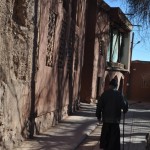 |
Kashan (935m) is known for its roses, textiles, pottery and tiles. Kashan was a commercial hub in the Qajar time with rich merchants and hundreds of traditional houses, some of which were once grand mansions. Its history is also interwoven with legend, one of which has the Bible’s ‘Three Wise Men’ setting out from Kashan to pay tribute to the newborn Christ. Kashan is also famous for its rose water and we all brought a few bottles as souvenirs.
As we did not have much time, we could only visit the Khan-e Borujerdi (a grand traditional house consisting of two sections, andaruni and a biruni with an ornately decorated courtyard) and the Bagh-e Tarikhi-ye Fin (Fin Garden) designed by Shah Abbas I.
The garden is famous for its spring water and considered as one of the finest gardens in Iran. It is a classic Persian vision of paradise with Shotorgalue-ye Safavi, Abbas’s two-storey pavilion at the centre of the garden. The most interesting part of historical significance is the bathhouse where Amir Kabir, a national hero was murdered in 1851. He was the brother-in-law of Nasir od-Din Shah and a popular pro-change Prime Minister. Shah’s mother persuaded the Shah that Amir Kabir had to go. The bathouse is now a museum.
Qom (931m), Iran’s second-holiest city after Mashhad. It has become a pilgrimage site after the death of Fatima, the sister of Imam Reza (the Eighth Imam who was buried in Mashhad). The physical and spiritual centre of Qom is the Hazat-e Masumeh with an enormous dome and another golden dome flanked by tall minarets built under the Safavid dynasty.
We had a late farewell dinner before spending an hour in Pasha’s flat. He has studied English at university and has lived and worked in the US and Japan. Pasha and Peter (our guide from Hong Kong) is a great team. We are lucky in having Pasha who is a perfect local guide: intelligent, funny, charming and knowledgeable.
The group tour came to an end when my friends left for the airport at midnight. I was on my own again. (End of Part 2)


